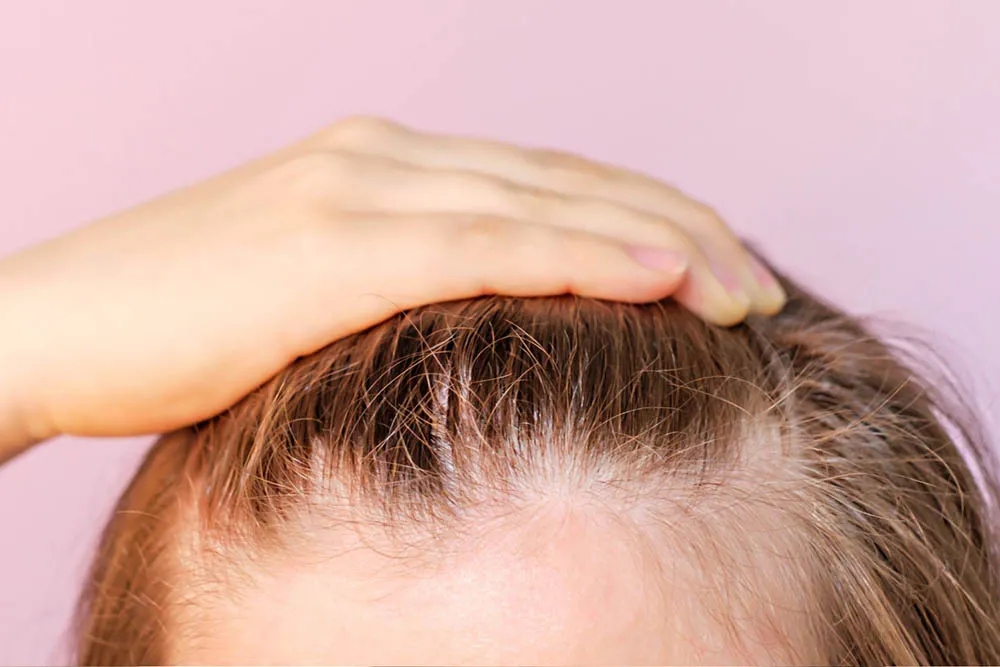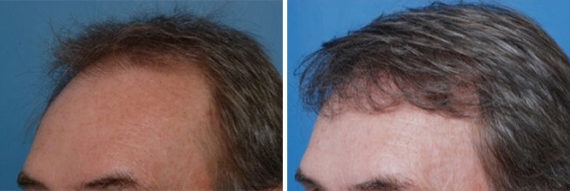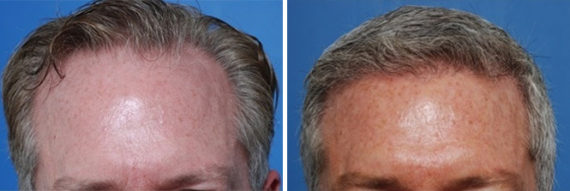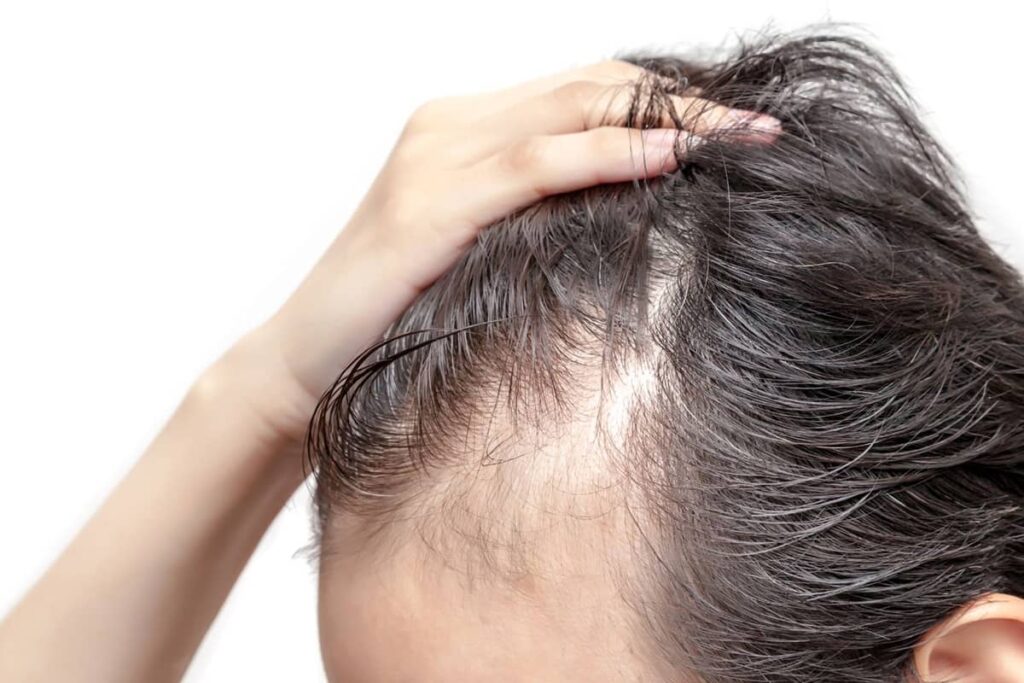Looking into the mirror, you’ve probably noticed that your hairline isn’t where it once was. Receding hairlines, a typical symptom of pattern baldness, can take a toll on one’s self-esteem. However, the silver lining is found in the field of hair transplant surgeries. Picture this: repopulating a forest after it’s been cleared. Hair transplant surgery, in essence, is similar—reviving what was once lost.

Hair Transplants for Receding Hairlines
- Hair transplants involve moving hair follicles from a donor area to thinning areas to promote natural hair growth and address receding hairlines.
- Various factors like genetics, hormonal changes, stress, lifestyle, and hair care practices contribute to hairline recession.
- Modern hairline surgeries, including Follicular Unit Extraction (FUE), have high success rates, natural-looking results, and lasting effects.
- FUE is a minimally invasive procedure that extracts individual hair follicles, creating a natural hairline with minimal scarring and quick recovery time.
- Consulting with qualified specialists ensures personalized treatment plans, safe procedures, and optimal results in restoring a youthful hairline.
What’s a Hairline?
Looking at our hairline is like looking at the edge of a dense forest. It marks the beginning of our head of hair and helps frame our face. Each person’s hairline is unique, like fingerprints. Some have straight hairlines, while others have uneven ones that add character to their features.
However, over time, this dense hair that creates the perfect hairline can thin out due to factors like pattern hair loss. Suddenly, that robust forest seems a bit sparse in places. As the hairline starts to recede, many seek refuge in procedures like hair restoration surgery. Why? For many, a receding hairline isn’t just about aesthetics. A full, dense hair crowning our head is often associated with youth, vitality, and confidence.
What Causes Hairlines to Recede?
Many people wonder about the causes of hairline recession, which can be influenced by various factors.
- Genetics: Hereditary baldness is a primary cause for many. If your parents or grandparents had receding hairlines, there’s a good chance you might face the same hair loss issues.
- Hormonal Changes: Imbalances in hormones, especially DHT (Dihydrotestosterone), can influence hair loss. DHT can shrink hair follicles, hindering follicle growth and leading to thinner strands over time.
- Stress: Chronic stress can play a pivotal role in disrupting healthy hair follicles and accelerating hair loss.
- Lifestyle and Diet: A poor diet lacking essential nutrients can weaken hair follicles. Ensuring a balanced intake of vitamins and minerals can promote a healthy scalp and follicle growth.
- Hair Care Practices: Overstyling, excessive heat, and harsh products can lead to hair recession. Treating your hair with care and opting for gentle products can help maintain healthy hair follicles.
Understanding the cause of a receding hairline is important for determining the right treatment. While genetics are a key factor, there are approaches to manage and control other factors contributing to hair loss.
But here’s the real question: can we bring back the line?
How Can We Fix a Receding Hairline?
There is no cure for a receding hairline, but various methods like vitamin supplements, prescribed medication, and FUE hair transplant surgery can help slow it down and promote hair growth.
Are You Ready For A Consultation?
You are about to take the first steps towards improving your appearance and enhancing your self-image by learning about contemporary plastic surgery.
How Effective Are Hair Transplants for Receding Hairlines?
It is important to thoroughly research the effectiveness of hair transplants for a receding hairline. In the hair transplantation field, many advancements have demonstrated promising results.
- Success Rates: Modern hairline surgeries, including the Follicular Unit Extraction (FUE), have exhibited high success rates. The precision involved in extracting and implanting hair grafts ensures that a majority of the transplanted hair grafts flourish in their new location.
- Natural Results: A key advantage of the hair transplantation procedure is the pursuit of natural-looking outcomes. Since the procedure involves relocating an individual’s hair grafts, the resulting growth aligns with the person’s original hair texture and direction, making it nearly indistinguishable from the surrounding hair.
- Longevity of Transplanted Hair Grafts: One of the standout benefits of hair transplantation is its lasting impact. Transplanted hair grafts, once settled, tend to be permanent. This means that barring unforeseen circumstances or underlying medical conditions, the hair you regain from the procedure is here to stay.
- Comprehensive Approach: Modern hairline surgeries like follicular unit transplantation address the nuances of hair recession comprehensively. By focusing not just on the hairline but also on hair density and distribution, these procedures ensure a full, even regrowth.
However, as with any medical procedure, results can vary based on individual factors, including the quality of donor hair, the skill of the hair transplant surgeon, and post-operative care. Therefore, it’s imperative to seek consultation and services from reputable clinics and surgeons experienced in hair transplantation procedures. This ensures that you garner the maximum benefits and enjoy a renewed sense of confidence with a restored hairline.
Which Hair Transplant Technique is the Best for Receding Hairline?
There are different hair transplant techniques available, with Follicular Unit Extraction (FUE) being one of the leading options. This technique provides seamless results by recreating the hairline and extracting hair graft units individually. Another technique that is often compared to FUE is Follicular Unit Transplantation (FUT).
Before & After Photos
* Each patient is unique and individual results may vary.
What’s FUE and How Does It Help to Treat Receding Hairlines?
When exploring the world of hair transplantation as a solution to hair loss and receding hairlines, you’ll likely encounter various types of hair transplants. One prominent approach is Follicular Unit Extraction, commonly referred to as FUE. But what exactly is FUE, and how does it contribute to achieving a natural hairline and a lasting solution to hair loss?
- Understanding the Process: Follicular Unit Extraction is a minimally invasive hair transplant procedure that excels in providing natural-looking results. Unlike other techniques, FUE doesn’t involve the removal of a strip of scalp but rather the extraction of individual follicular units, which are then transplanted to the targeted areas.
- Natural Hairline Design: One of the key benefits of FUE is its precision in creating a natural hairline design. Surgeons meticulously transplant the extracted follicular units, paying close attention to the direction and angle of the hair growth. This artistry ensures that the transplanted hairs seamlessly blend with the existing ones, resulting in an authentic-looking hairline.
- Minimal Recovery Time: FUE boasts a relatively short recovery time compared to other types of hair transplants. Patients can often return to their daily routines within a few days, making it a convenient choice for those with busy lives.
- Versatility: FUE is versatile and can be used to address various stages of hair recession. Whether you’re dealing with a slight hairline issue or more extensive balding, FUE can be tailored to your specific needs.
Understanding the nuances of FUE and its role in addressing receding hairlines can help individuals make informed decisions regarding their hair restoration journey. Whether you’re considering FUE or other types of hair transplants, consulting with a qualified specialist can provide valuable insights into the most suitable approach for your unique situation.
Is Getting a Hair Transplant Safe?
Hair transplant surgery is safe when performed by a trained, experienced plastic surgeon. Discomfort, swelling, and scalp inflammation may occur temporarily after the procedure. These are common side effects during the early stages of recovery and should not cause significant concern.
However, it is important to avoid untrained doctors as they can lead to serious injuries and infections.
How Long Until My Hairline Looks Like It Used to?
Patience is the key here. After the transplant, the initial phase might see the transplanted hairs shedding. But don’t be alarmed; it’s part of the process. Over the subsequent months, as the hair growth phase kicks in, you’ll see a gradual transformation. By the 8th to 12th-month mark, most patients witness a remarkable difference, taking them closer to their once youthful hairline.
In conclusion, for those considering hair transplant surgery, it is important to consult with a qualified specialist like Dr. Agarwal or Dr. Holmes to better understand the nuances and determine what approach may best meet their individual needs. With its natural-looking results, minimal recovery time, and versatility in treating various stages of hair recession, FUE offers an ideal solution for restoring your youthful hairline.


